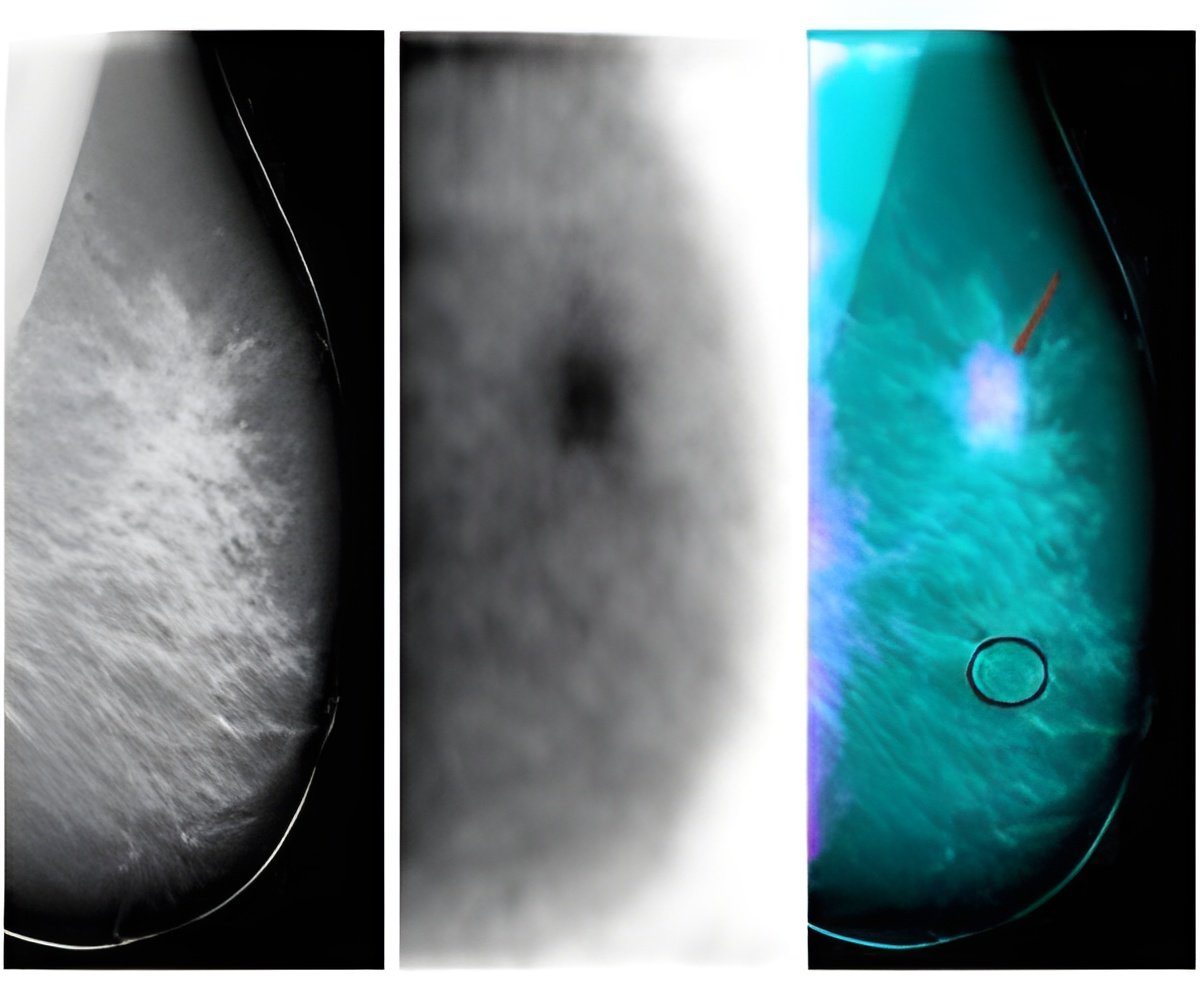
A team of researchers from University of New Mexico School of Medicine and Cancer Research and Treatment Center, Senior Scientific, LLC, and the Center for Integrated Nanotechnologies facility at Sandia National Laboratories created nanoprobes by attaching iron-oxide magnetic particles to antibodies against HER-2, a protein overexpressed in 30% of breast cancer cases. Using these tiny protein-iron particles the team was able to distinguish between cells with HER-2 and those without, and were able to find HER-2 cancer cells in biopsies from mice. In their final test the team used a synthetic breast to determine the potential sensitivity of their system.
Dr Helen Hathaway explained, "We were able to accurately pinpoint 1 million cells at a depth of 4.5 cm. This is about 1000x fewer cells than the size at which a tumor can be felt in the breast and 100x more sensitive than mammographic x-ray imaging. While we do not expect the same level of nanoparticle uptake in the clinic, our system has an advantage in that dense breast tissue, which can mask traditional mammography results, is transparent to the low-frequency magnetic fields detected by the SQUID sensors."
Future refining of the system could allow not only tumor to be found but to be classified according to protein expression (rather than waiting for biopsy results). This in turn could be used to predict disease progression and refine treatment plans and so improve patient survival.
Source-Eurekalert













